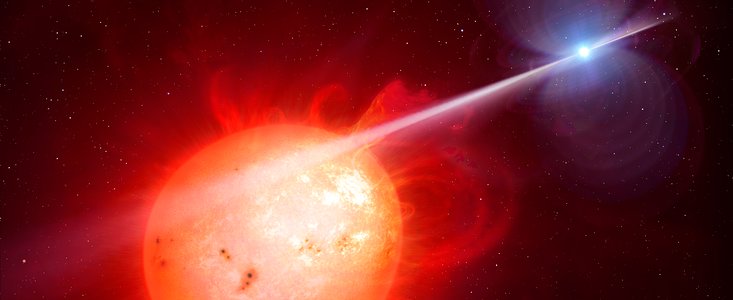In May 2015, a team of amateur astronomers from Germany, Belgium, and the UK encountered a star system exhibiting behavior unlike anything they had ever seen. Now, follow-up observations led by the University of Warwick, using multiple telescopes on the ground and in space, have confirmed the nature of the previously misidentified system.

Deemed AR Scorpii, the star is 380 light-years away in the constellation Scorpius and flashes brightly then fades every few minutes. It is comprised of two stars: a compact white dwarf the size of the Earth, but containing 200,000 times more mass, and a cool red dwarf companion one-third the mass of the Sun, orbiting one another every 3.6 hours.
The white dwarf is spinning exceptionally fast, charging up electrons to almost the speed of light. As the white dwarf spins, energized particles fly through space, lashing the cooler companion and releasing a powerful pulse of electromagnetic radiation every 1.97 minutes. These powerful pulses include radiation at radio frequencies, which has never been detected from a white dwarf system.
The observed properties of AR Scorpii are incredibly unique. The radiation across a broad range of frequencies indicates emission from the electrons accelerated in magnetic fields, which can be explained by the spinning white dwarf. However, the source of the electrons is a major mystery. It’s unclear whether it is associated with the white dwarf itself or its cooler companion.
AR Scorpii was first observed in the early 1970s and its fluctuations in brightness every 3.6 hours led to incorrectly classifying the star as a lone variable. The primary source of AR Scorpii’s varying illuminations was revealed with the help of both amateur and professional astronomers. Similar pulsing behavior has been observed before, but from neutron stars (some of the densest celestial objects known in the universe), never white dwarfs.
Advertisement
Learn more about Electronic Products Magazine





